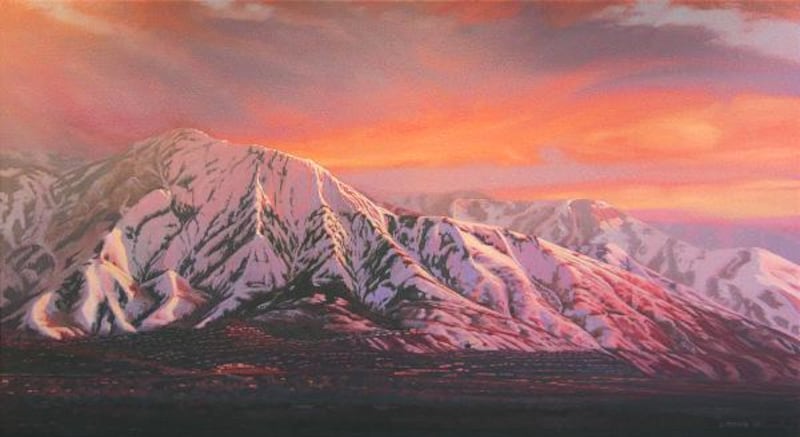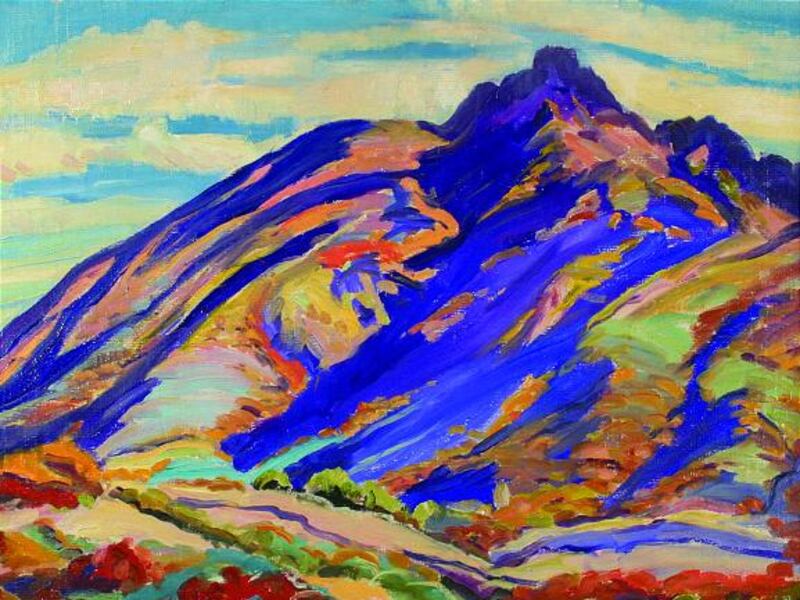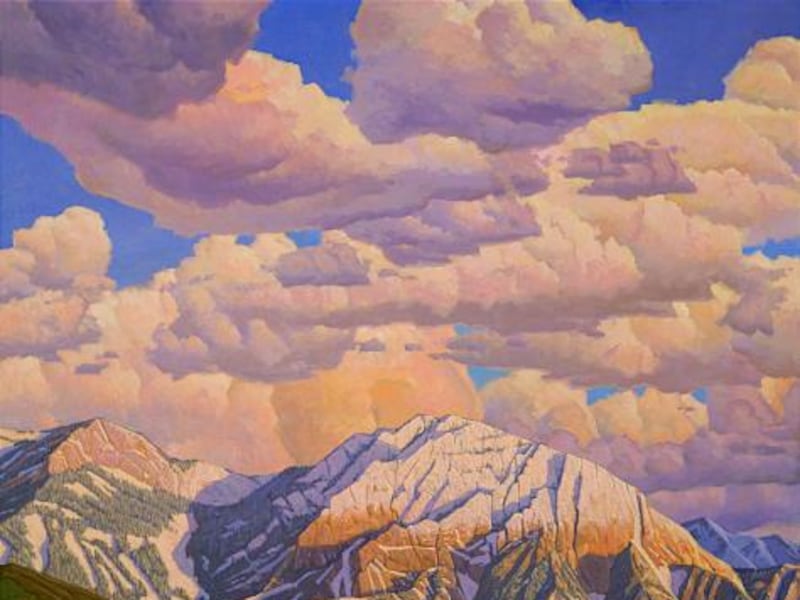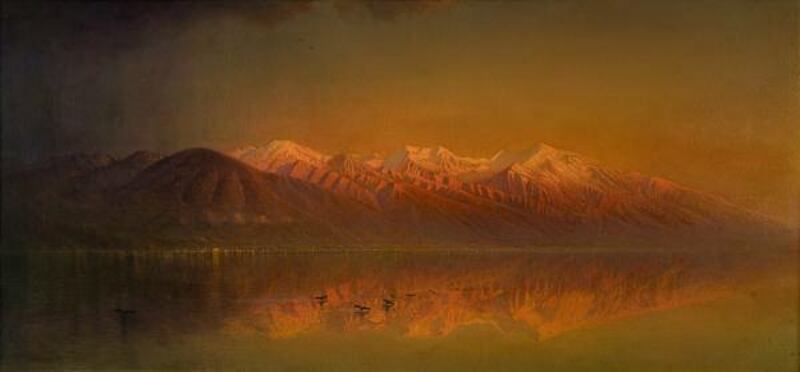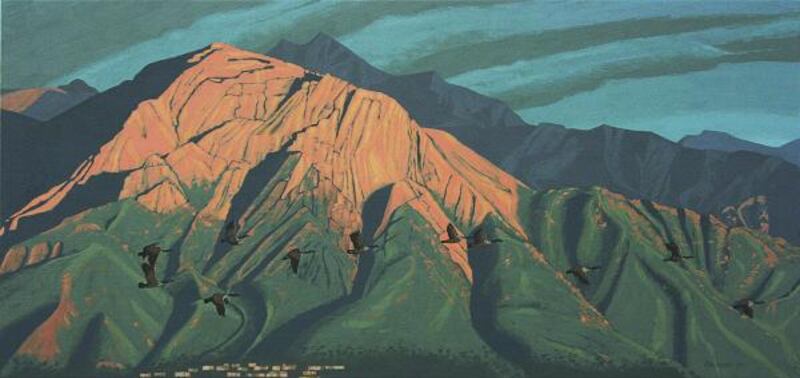In Greece, Mount Olympus is the legendary home of the gods.
Utah's Mount Olympus, located in the center of the Salt Lake Valley, due east of Murray and Taylorsville, has its own celebrated appeal. Though not the highest peak in the Wasatch Range, its commanding presence still led the early pioneer mountain-namers to bestow upon it a name worthy of its stature.
Mount Olympus acts as an anchor in the valley, as an unchanging reference point to both our environment and our history, says Donna Poulton, associate curator of Utah and Western Art at the Utah Museum of Fine Arts, who has put together an exhibition honoring the mountain peak.
To Brigham Young and the early pioneers, she says, Mount Olympus was a crucial source of minerals, timbers for building and precious water, "and the gods rewarded those who worked so hard for those resources. But when the pioneers traded their picks and plows for pencils and paintbrushes, the true majesty of Mount Olympus came to light. The mountain was an undeniable source of artistic inspiration."
The exhibition features paintings mostly borrowed from private collections, so they will be new to many viewers, says Poulton, and they represent roughly 150 years of looking at and being inspired by the mountain.
Some works include it in a broader overview; some focus on it directly. But they all capture the feel and flavor of the mountain that has been important, not only to artists, but also to authors, hikers, geologists, climbers, photographers and other aficionados.
Mount Olympus has an elevation of 9,026 feet above sea level, which puts it about 4,800 feet above the Salt Lake Valley floor. One of its distinct features are twin peaks that are visible from most angles; but part of the appeal of the mountain is how different it looks, not only from different valley locations but also at different times of day.
"It's fascinating to see how different artists interpret it," Poulton said. "Everyone did it a little differently."
The earliest painting in the exhibition was done by Gilbert D. Munger, who came to the valley in 1869 with the Hayden survey.
"The painting was done in a studio from sketches," Poulton said, "and as a topographer, he got the mountains just right. However, he brought the Great Salt Lake right up to the mountains, so you can see the Tabernacle reflected in the water." It's a beautiful, if not-quite-accurate effect, she said.
Another early painting was done in 1893 by Edwin Deakin, a California artist who spent three months in Utah. Poulton knew of the painting, but not where it was. She spent three years searching auction records, looking for it for a book she's involved with. "And then I walked into the home of David Huntsman, to see some other paintings, and there was the Deakin. His wife has been teasing him about 'that old painting.' "
Another painting in the Huntsman collection is one by Utah artist George Ottinger. That one uses it as a background for wheat fields. One by Henry Lavender Adolphus Culmer, painted in 1891, was probably done from the Sugar House area, says Poulton. "It's fun to see how Mount Olympus looks so different from different angles."
And it's fun to learn the stories behind many of the paintings. The only one in the exhibition that is owned by UMFA was painted by Louise Richards Farnsworth in 1920.
"She was probably the most important woman painter from that era, and she was married to a very wealthy person, so she could afford to use, and did use, gobs of paint in her works," says Poulton.
A painting by Lee Greene Richards was given to the university and has hung in the Olpin Center. "It has been on campus for 80 years," she said, "and the day before we were to borrow it, it somehow got a big hole in the bottom corner. We had to have Anthony's Fine Art do an emergency restoration for us."
There's a painting by James Harwood that reflects the impressionist style he adopted later in his career. There's one by Edward D. Maryon that won a contest sponsored by Mount Olympus Waters. A black-and-white version of it appeared on the company's bottles for five years.
There are also paintings by "up-and-coming" artists such as Mark Knudsen and Leslie Thomas. "I love the little Life Flight helicopter Thomas put in her painting," Poulton said. "People who live near Mount Olympus say they hear it a lot."
That's another thing she has learned in putting together this exhibition. "Almost everyone who comes has a story about it and how it relates to their own life. A lot have climbed it or know people who have climbed it."
The steep, 3.1-mile Mount Olympus Trail to Summit Peak is a popular hike, and a register at the top lets hikers record their climb and share their impressions.
"People who have come in have talked about their hair standing on end from the energy of an electrical storm. Some met rattlesnakes on the trail. Some say it was way harder than they thought it would be," she said, "but they all seem to have a connection."
As part of the exhibition, she and the UMFA staff have compiled a nine-minute video detailing some of those experiences. Included are the commentary of a poet who was inspired by the peak; a former University of Utah student who wrote his thesis on experiencing the mountain through the eyes of an artist; and Caine Alder, a man in his mid-70s who has climbed Mount Olympus more than 425 times in the past 50 years.
In connection with the exhibition, Poulton will also give a free public lecture, "Painting Utah's Mount Olympus," which will be held Wednesday, Sept. 15, at 6 p.m. at the museum.
Poulton's goal in putting together the exhibition is to give viewers new ways of looking at a familiar landmark and new ways to think about the world around us, she said. She hopes it will help them discover new ideas about who we are and where we live.
She loves collections of images such as those found in "Painting Utah's Mount Olympus" that reference a sense of place.
"You only have to look at Mount Olympus to know your orientation in the valley," she says. But even more than that, it's a landmark that "has strong physical, psychological and emotional ties, and it and its art can be enjoyed on all those levels."
If you go . . .
What: Painting Utah's Mount Olympus
Where: Utah Museum of Fine Arts, 410 Campus Center Drive
When: Through Nov. 14 days and times vary
Admission: adults, $7; youths and senior citizens, $5; higher education students, free
Phone: 801-581-7332
Web: www.umfa.utah.edu
e-mail: carma@desnews.com

